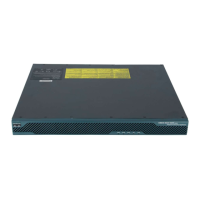Implementing IPSec Network Security on Cisco IOS XR Software
How to Implement General IPSec Configurations for IPSec Networks
SC-128
Cisco IOS XR System Security Configuration Guide
Configuring IPSec Failure History Table Size
This task changes the size of the failure history table.
Note This IPSec feature is supported only on the Cisco IPSec VPN SPA.
SUMMARY STEPS
1. configure
2. crypto mib ipsec flowmib history failure size number
Step 4
end
or
commit
Example:
RP/0/0/CPU0:router(config-myprofile)# end
or
RP/0/0/CPU0:router(config-myprofile)# commit
Saves configuration changes.
• When you issue the end command, the system
prompts you to commit changes:
Uncommitted changes found, commit them
before exiting(yes/no/cancel)?
[cancel]:
–
Entering yes saves configuration changes to
the running configuration file, exits the
configuration session, and returns the
router to EXEC mode.
–
Entering no exits the configuration session
and returns the router to EXEC mode
without committing the configuration
changes.
–
Entering cancel leaves the router in the
current configuration session without
exiting or committing the configuration
changes.
• Use the commit command to save the
configuration changes to the running
configuration file and remain within the
configuration session.
Step 5
show route [vrf
vrf name
]
Example:
RP/0/0/CPU0:router#
Displays the proxy information that has been added
as static routes. The SAs, which are created on these
interfaces, are also called software-based SAs.
Command or Action Purpose

